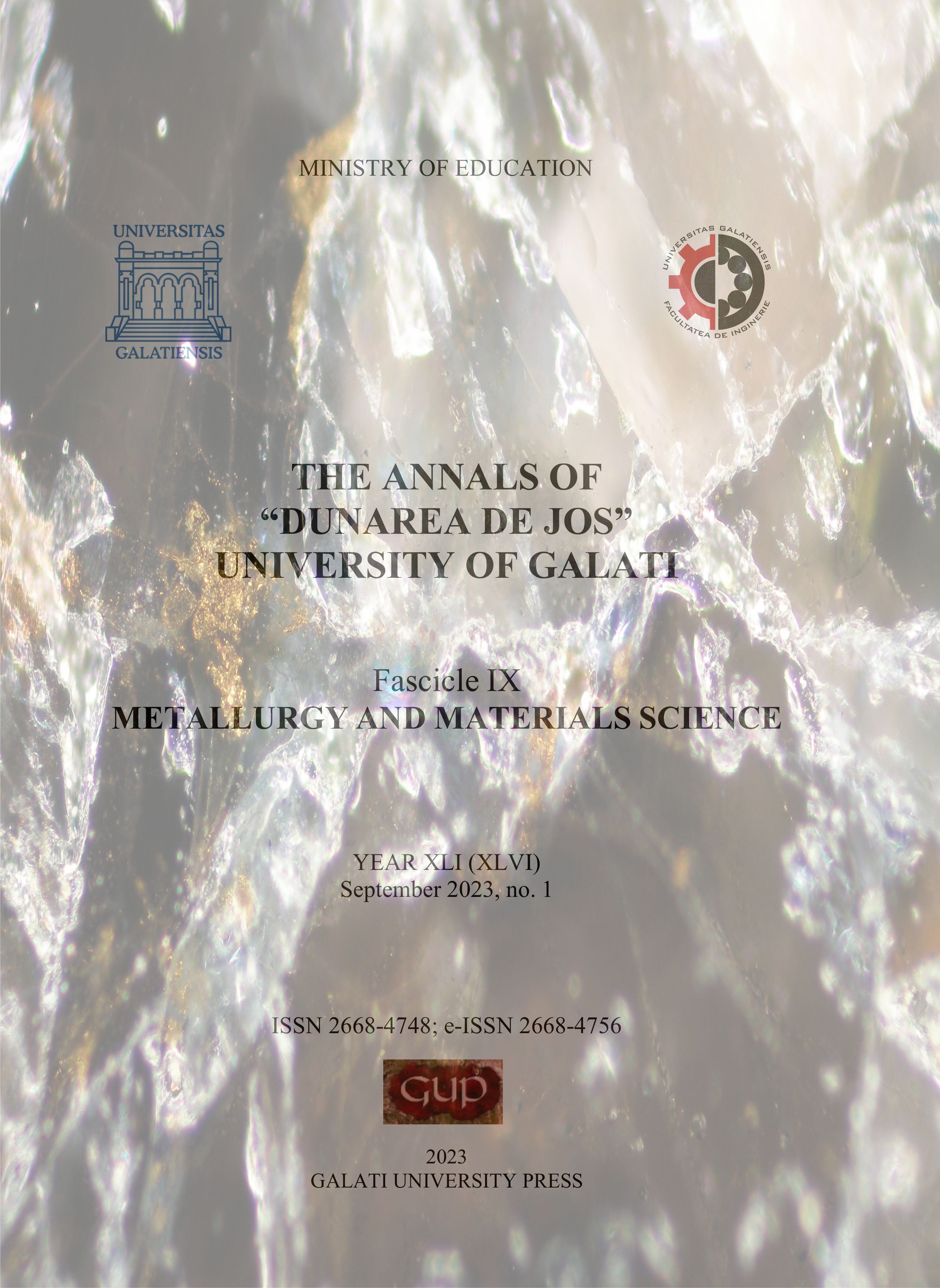Importance of Simulating the Steel Flow Process in the Tundish, on the Quality of Continuously Cast Slabs
Abstract
The benefits of using mathematical modeling of the flow are obvious, the final objective being the elimination of as many inclusions as possible during the flow of steel through the tundish, and thus, obtaining steel with superior quality.
In this work, a simulation of the movement of the liquid alloy in the tundish was carried out, in order to highlight the erosion of its refractory lining. For this, we used SolidWorks, RealFlow, and ABAQUS programs.
Using these simulation programs, the filling method of the tundish, the contact area of the alloy jet with the tundish wall, and the "dead" areas are highlighted, as well as the turbulences that can appear during the flow, which have a negative impact on the quality of the steel.
Downloads
References
[2]. Van der Stel J., et al., Tundish Metallurgy: A Solution or a Limitation to Clean Steel, Development in Ladle Steelmaking and Continuous Casting, edited by G. D. Lawson (Montreal: The Canadian Institute of Mining and Metallurgy, p. 218-223, 1990.
[3]. Lowry M. L., Sahai Y., Thermal Effects on the Flow of Liquid Steel in Continuous Casting Tundishes, Iron and Steelmaker, 19:3, p. 81-88, J. Schade. Lecture Notes, ISS Short Course on Ladle and Tundish Metallurgy for Clean Steels, p, 314-321, Oct. 10, 1997.
[4]. Sahai Y., Chakraborty S., Importance of Thermal Modeling in Continuous Casting Tundishes, Proc. Process Technology Division Conf., 10, p. 161-176, 1992.
[5]. Graves A. M., et al., Design of Consumable Tundish Refractories for Production of UltraLow-Carbon Steel, Proc. Steelmaking Conf., 75, p. 333-335, 1992.
[6]. Daussan A., Martin J., Roziere J., Steel Purity in Continuous Casting Tundishes, Proc. Steelmaking Conf., 78, p. 471-477, 1995.
[7]. Dorricott J. D., Heaslip L. J., Hoagland P. J., Asymmetric Tundish Design and Flow Control Principles in Multistrand Billet and Bloom Casters, Proc. Electric Furnace Conf., Iron and Steel Society, 48, p. 119-124, 1990.
[8]. Hiraki S., et al., Influence of Tundish Operations on the Quality of Hot Coils During HighSpeed Continuous Casting, Iron & Steelmaker, 26:3, p. 47-52, 1999.
[9]. Suzuki I., et al., Development of Tundish Induction Heater for High Quality Continuously Cast Blooms, Tundish Metallurgy, vol. 1, edited by A. McLean (Warrendale, Pa.: Iron and Steel Society), p. 201-207, 1990.
[10]. Melville S. D., Brinkmeyer L., Evaluating Steelmaking and Casting Practices Which Affect Quality, Proc. Steelmaking Conf., 78, p. 563-569, 1995.
[11]. McPherson N. A., McLean A., Tundish to Mold Transfer Operations, Continuous Casting, vol. 6 (Warrendale, Pa.: Iron and Steel Society), p. 11-15, 1992.



